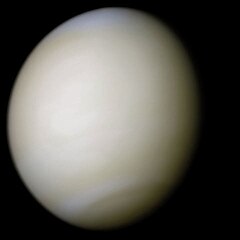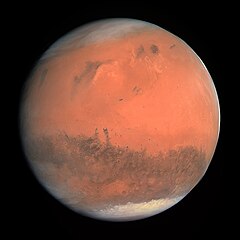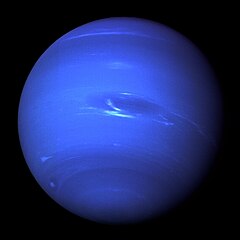Planets of Our Solar System
Explore the fascinating worlds that orbit our Sun, from the rocky inner planets to the gas giants of the outer solar system.
Mercury
Mercury is the smallest and innermost planet in the Solar System. It's a rocky planet with a surface covered in craters, similar to our Moon. With no atmosphere to retain heat, Mercury's surface experiences extreme temperature variations from 430°C during the day to -180°C at night. Despite its proximity to the Sun, Mercury isn't the hottest planet (that's Venus).
Planet Facts
- Radius: 2440 km
- Distance from Sun: 57.9 million km
- Orbital Period: 88 days
- Length of Day: 58.6 Earth days

Venus
Venus is the second planet from the Sun and is Earth's closest planetary neighbor. It's the hottest planet in our solar system due to its thick atmosphere, which traps heat in a runaway greenhouse effect. Venus spins slowly in the opposite direction from most planets. Its surface is a volcanic landscape with numerous mountains and large volcanoes.
Planet Facts
- Radius: 6052 km
- Distance from Sun: 108.2 million km
- Orbital Period: 225 days
- Length of Day: 243 Earth days

Earth
Earth is the third planet from the Sun and the only astronomical object known to harbor life. About 71% of Earth's surface is water-covered, and the atmosphere consists mostly of nitrogen and oxygen. Earth's surface is made up of tectonic plates that slowly move across the mantle over millions of years. Earth has one natural satellite, the Moon.
Planet Facts
- Radius: 6371 km
- Distance from Sun: 149.6 million km
- Orbital Period: 365.25 days
- Length of Day: 24 hours

Mars
Mars is the fourth planet from the Sun and the second-smallest planet in the Solar System. It's often referred to as the 'Red Planet' due to its reddish appearance caused by iron oxide on its surface. Mars has two small moons, Phobos and Deimos. The planet has seasons, polar ice caps, canyons, volcanoes, and evidence that it was once much more hospitable to life.
Planet Facts
- Radius: 3390 km
- Distance from Sun: 227.9 million km
- Orbital Period: 687 days
- Length of Day: 24.6 hours

Jupiter
Jupiter is the fifth planet from the Sun and the largest in the Solar System. It's a gas giant with a mass one-thousandth that of the Sun, but two-and-a-half times that of all the other planets combined. The planet is primarily composed of hydrogen and helium. Jupiter's iconic Great Red Spot is a giant storm that has been raging for hundreds of years. The planet has a strong magnetic field and at least 79 moons.
Planet Facts
- Radius: 69,911 km
- Distance from Sun: 778.5 million km
- Orbital Period: 12 years
- Length of Day: 9.93 hours

Saturn
Saturn is the sixth planet from the Sun and the second-largest in the Solar System, after Jupiter. It's a gas giant with an average radius about nine times that of Earth. Saturn is best known for its spectacular ring system, which consists mostly of ice particles with a smaller amount of rocky debris and dust. The planet has a complex atmosphere with bands of clouds and storms, and it has at least 82 moons, with Titan being the largest.
Planet Facts
- Radius: 58,232 km
- Distance from Sun: 1.4 billion km
- Orbital Period: 29.5 years
- Length of Day: 10.7 hours

Uranus
Uranus is the seventh planet from the Sun. It has the third-largest planetary radius and fourth-largest planetary mass in the Solar System. Uranus is similar in composition to Neptune, and both are ice giants, different from the gas giants Jupiter and Saturn. The planet's atmosphere is primarily composed of hydrogen and helium, but it contains more 'ices' such as water, ammonia, and methane. Uranus has a unique sideways rotation, with its axis nearly parallel to its orbital plane.
Planet Facts
- Radius: 25,362 km
- Distance from Sun: 2.9 billion km
- Orbital Period: 84 years
- Length of Day: 17.24 hours

Neptune
Neptune is the eighth and farthest-known Solar planet from the Sun. It is the fourth-largest planet by diameter, the third-most-massive planet, and the densest giant planet. Neptune is similar to Uranus in composition, with hydrogen and helium dominating, but it has a higher proportion of 'ices' like water, ammonia, and methane. The planet has the strongest winds in the Solar System, reaching speeds of 2,100 km/h. Neptune was the first planet located through mathematical calculations.
Planet Facts
- Radius: 24,622 km
- Distance from Sun: 4.5 billion km
- Orbital Period: 165 years
- Length of Day: 16.11 hours
